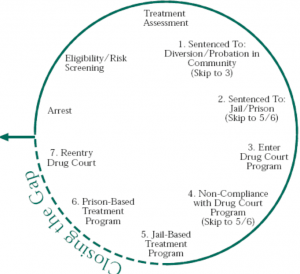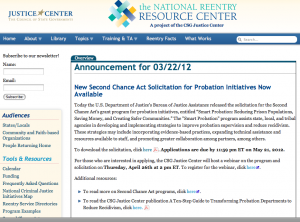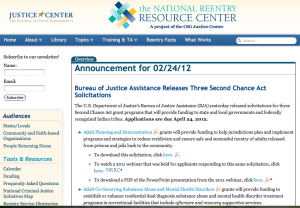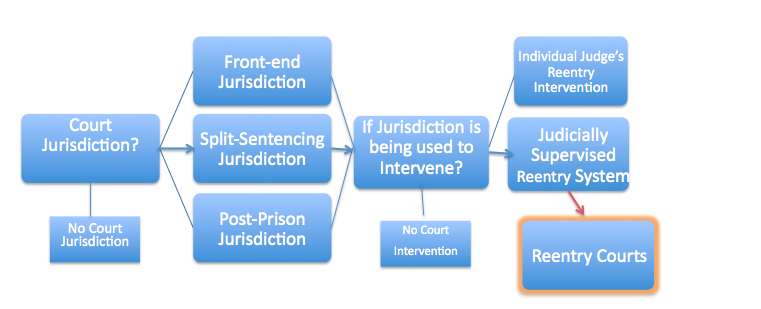April 9, 2012
 Part 2: The Single Sentencing Court Team Concept:
Part 2: The Single Sentencing Court Team Concept:
One common feature that should define the Systemic Sentencing Model, is that the same judge and court team deal with the sentenced offender (to the extent possible), as part of a seamless supervision, treatment, and rehabilitation system, that runs from sentencing, through custody, through community supervision. The first of such systems go back more than 20 years to the dawn o the Drug Court era. It was widely understood that the sentencing and supervision of drug offenders was dysfunctional. There was little coordination in the court’s dealing with the drug offender, the offender rarely saw the same judge or court personnel twice, and there was little system accountability and therefore far too little offender responsibility and compliance ( Drug Courts: a Judicial Manual, J Tauber, California Center For Judicial Education and Research Journal, Summer 1994)
We still live in a largely uncooperative world of competing government departments, uncollaborative programs and agencies, and weak sentencing follow-thorugh by the courts and relevant agencies. As noted in Part 1, its unrealistic for individual courts to develop the advanced capabilities necessary to develop evidence-based sentencing practices (“Arming the Courts with Research: Ten Evidence Based Sentencing Initiatives to Control Crime and Reduce Costs”, a PEW monograph, Judge Roger Warren, ret; click on image).
What is necessary, is for a jurisdiction to focus a single judge and court team (or in a larger jurisdiction, a dedicated cadre of judges and staff) to the task of applying evidence based practices to sentencing courts. There is no reason to use a different approach or rationale than that developed and successfully applied to drug courts and other problem-solving courts across the nation. A sentencing court’s effectiveness ultimately depends on a jurisdictions willingness to provide a rational, system-wide, coordinated approach to sentencing (It could be argued that much of the success of Hawaii’s PROJECT HOPE, rests on its systemic approach to felony probation supervision).
Some may feel it unnecessary for all felony sentencing and/or supervision to be handled by a problem-solving court. The advantages already described in such a system make it a very attractive alternative to the current somewhat haphazard process. What may be more surprising is the potential for savings to the court. Because the sentencing system will look to a validated risk/needs assessment tool to assist its sentencing decisions, it will be possible to create sentencing tracks for low risk/low need offenders that involve minimal resources and staff, allowing what limited resources that exist to be applied to high risk offenders with the greatest need and potential for harm.
In fact, low risk offenders may not be actively supervised by the court at all, after the individual makes a single supervision appearance before the judge after sentencing . On the other hand, a high-risk offender with a history of violence may be required to have weekly contact with the court and extensive contact with supervisory agencies and rehabilitative programs, over an extended period of time.
The next segment further analyzes the needs of a “special sentencing/probation court”










